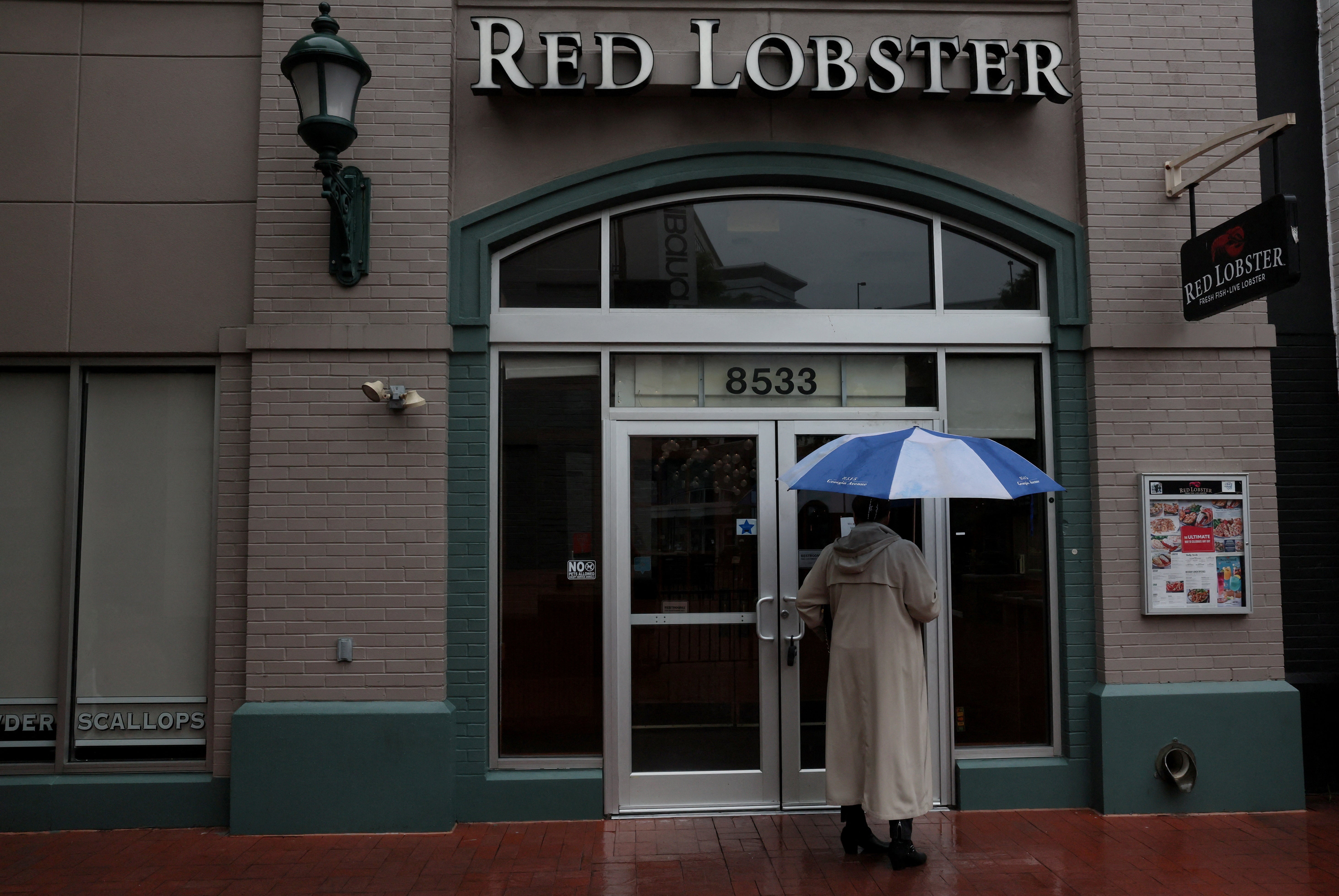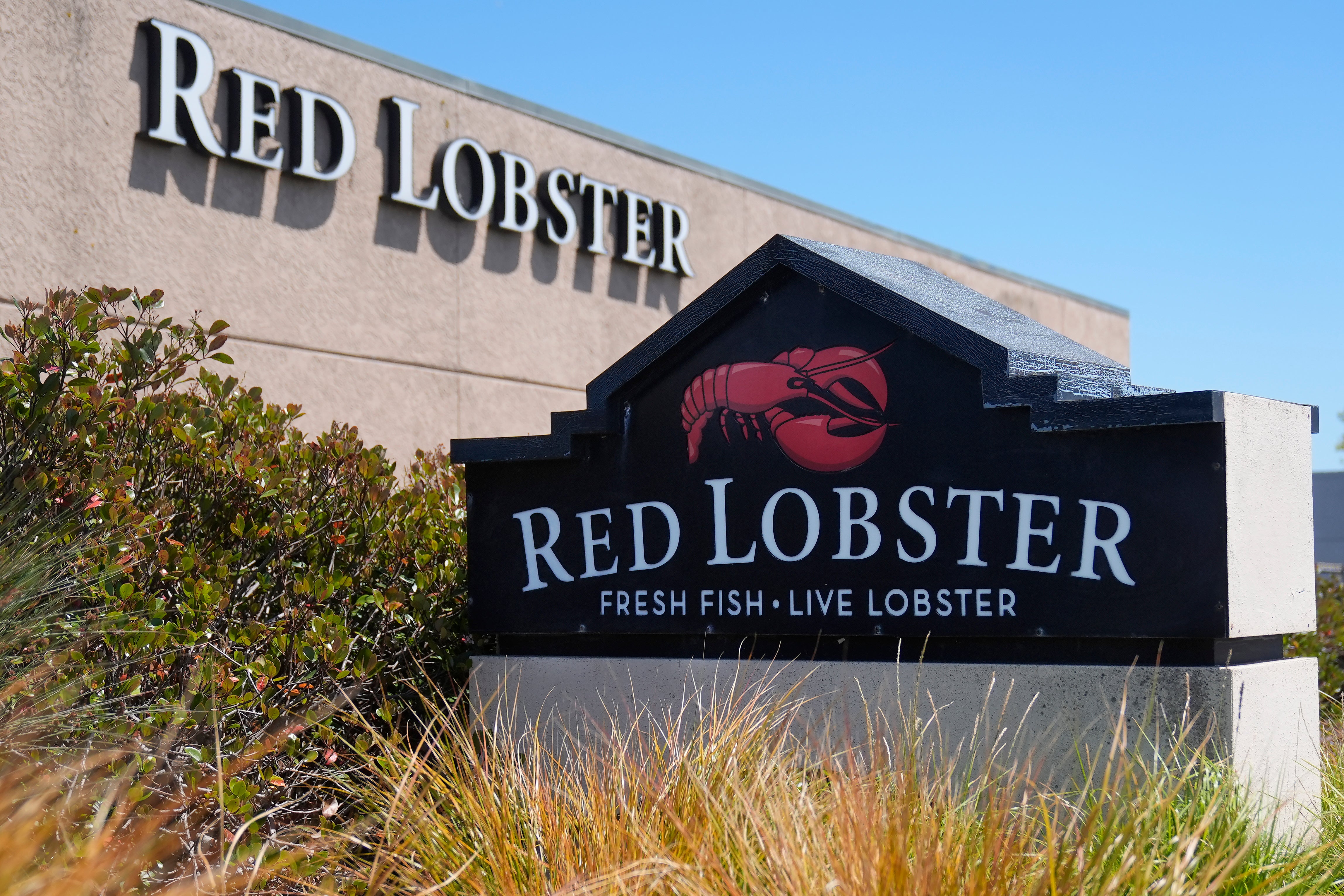
Red Lobster, the casual dining chain that won fans with inventions like popcorn shrimp and “endless” seafood deals, has filed for bankruptcy.
The 56-year-old chain made the filing late Sunday, days after shuttering dozens of restaurants amid massive loss thanks to its recent shrimp promotion.
“This restructuring is the best path forward for Red Lobster. It allows us to address several financial and operational challenges and emerge stronger and re-focused on our growth," said Red Lobster CEO Jonathan Tibus, a corporate restructuring expert who took the top post at the chain in March.
Red Lobster said it will use the Chapter 11 bankruptcy proceedings to simplify its operations, close restaurants and pursue a sale. As part of the filings, Red Lobster has entered into a so-called “stalking horse” agreement, meaning it plans to sell its business to an entity formed and controlled by its lenders.
While some Red Lobster locations will close, the chain is not shuttering for good. Approximately 650 locations will remain open and operational during the bankruptcy, CBS News reports.

The Orlando-based chain was founded by Bill Darden, who wanted to make seafood restaurants more accessible and affordable for families. Darden sold Red Lobster to General Mills in 1970. General Mills later went on to form Darden Restaurants, which owns Olive Garden and other chains, and spun the company off in 1995.
In recent years, Red Lobster has been struggling with increasing competition from fast casual chains like Chipotle as well as rising lease and labor costs. Its all-you-can eat deals for shrimp and lobster also became increasingly expensive.
Last fall, Red Lobster lost millions of dollars on its Ultimate Endless Shrimp promotion, which charged $20 for all-you-can-eat shrimp deal.
“We knew the price was cheap, but the idea was to bring more traffic in the restaurants,” Ludovic Garnier, the chief financial officer of Thai Union Group, Red Lobster's former co-owner, said in an earnings call with investors.

Mr Garnier said the deal did work, and restaurant traffic increased. But more guests opted for the $20 deal than Red Lobster expected, Garnier said, adding “we don't earn a lot of money at $20.” For the first nine months of 2023, Thai Union Group — which is one of the world's largest seafood suppliers — reported a $19 million share of loss from Red Lobster.
In January, Thai Union Group announced its intention to exit its minority investment in Red Lobster. CEO Thiraphong Chansiri said the COVID-19 pandemic, industry headwinds and rising operating costs had hit the dining chain hard and caused “prolonged negative financial contributions to Thai Union and its shareholders.”
Thai Union Group first invested in Red Lobster in 2016 and upped its stake in 2020.
Restaurant liquidator TAGeX Brands announced last week that it would be auctioning off the equipment of over 50 Red Lobster locations that were recently closed. The store closures span across more than 20 states — reducing Red Lobster’s presence in cities like Denver, San Antonio, Indianapolis and Sacramento, California.
The seafood restaurant chain said in a court filing that it has more than 100,000 creditors and estimated assets between $1 billion and $10 billion. The company's estimated liabilities are between $1 billion and $10 billion.
Red Lobster operates 700 locations worldwide.







